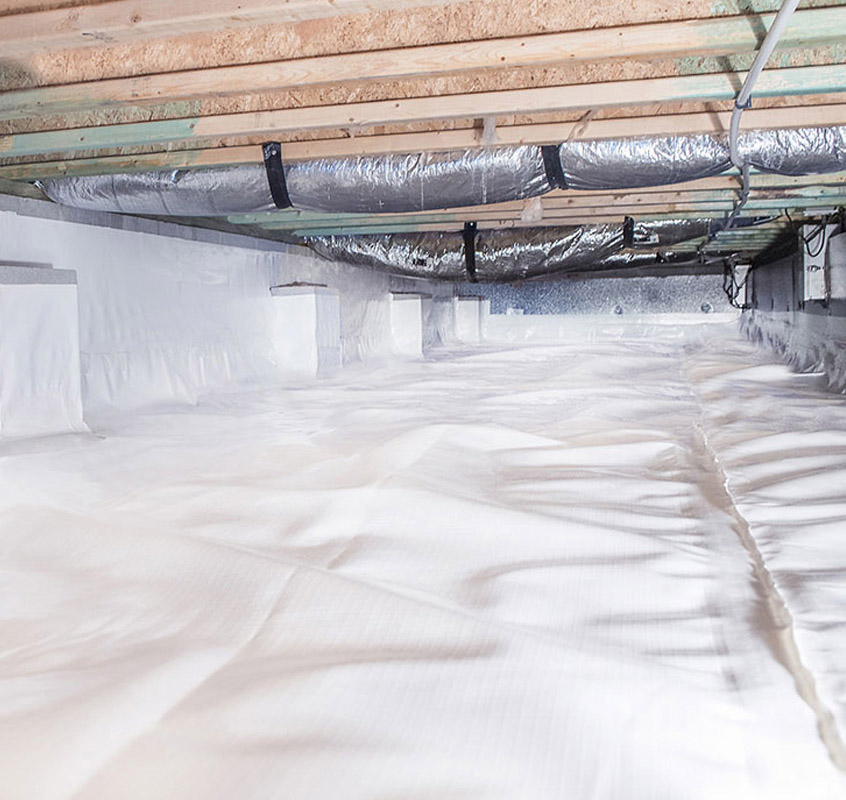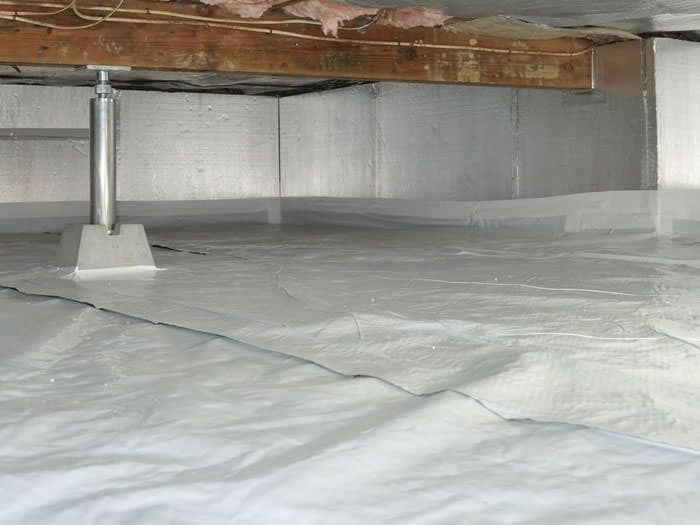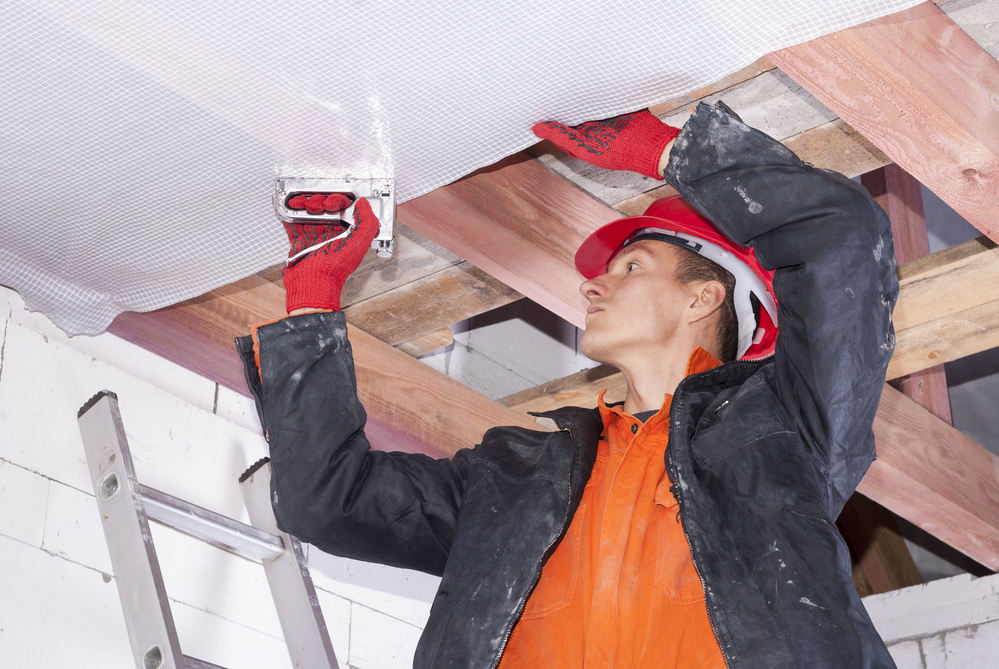Vapor barriers can play an essential role in a building’s temperature and moisture control. However, it is essential that you work with a professional insulation contractor before deciding where to install them.
Well-meaning homeowners intending to create an energy-efficient home envelope can mistakenly install vapor barriers where they do more harm than good, creating moisture issues rather than preventing them.
The Attic Solutions team provides free, no-obligation consultations in Oakland and around the Bay Area. We’ll let you know if - and where - your building might benefit from vapor barriers. We are honest, loyal, and never upsell products or services you don’t need. Just check out our Yelp! Reviews to read 5-star reviews from dozens of satisfied customers.
The ultimate goal of a vapor barrier is to keep moisture from coming in contact with structural or insulation materials that are vulnerable when wet, and to manage humidity levels inside the home for improved whole-home comfort and healthier indoor air quality (IAQ).
That said, today’s climate-conscious building techniques and high-quality building materials (such as blown-in cellulose insulation and double- or triple-paned windows) have meant that vapor barriers can do more harm than good when installed where they aren’t needed.
Consulting with experienced Oakland vapor barrier installers (licensed insulation contractors) is key to ensuring you only install vapor barriers in the spaces that need it most. That way your home’s contemporary building materials can do the work they were designed to do in terms of moisture control.
Do not let a greedy or dishonest contractor take advantage of you by convincing you to install vapor barriers where there shouldn’t be any. Learn how vapor barriers work - and where they work best - to protect your Bay Area home and your wallet.

Condensation, an accumulation of water particles, occurs when warm moist air meets a cooler, dry surface. This is why the interior of single paned windows develop condensation on a cool day, where the exterior of those windows can develop a layer of moisture on a warm day.
In your home, this same effect takes place in attics, crawl spaces, and basements - where there are more dramatic variations between interior/exterior surfaces or spaces and the warm/cool temperatures inside your home.
For example, in crawl spaces, we often recommend encapsulation using a vapor barrier to protect structural elements from the harmful effects of moisture that is a common occurrence when the cool ambient ground temperatures interact with the warmer floor surfaces above, but we rarely recommend them on interior walls surfaces where they can wind up creating a layer of condensation that cannot escape, and prevents immediate structural surfaces from drying out.

Vapor barriers, including those used in conjunction with insulation, are typically made from water-resistant materials, including:
Vapor barriers are also a good idea in areas of the home or adjacent to structural assemblies that are most susceptible to direct contact with water, such as the roof, specific areas in the bathrooms and kitchens, greenhouses, basements, etc.
In older homes, vapor barriers were beneficial in almost all of a home’s walls, floors, and ceilings because they prevented water transmission from condensation and into more inferior building materials. Contemporary homeowners, however, need to be more discerning about how and where they install vapor barriers to ensure their desire to block moisture diffusion doesn’t result in the creation of condensation that never would have developed otherwise.
Here in Oakland and the surrounding Bay Area, we enjoy the benefits of a Mediterranean climate, and that means we use vapor barriers more sparingly than those who live in more extreme, colder climates.
The International Building Code (IRC) has intentionally divided the U.S. map by numbered climate zones to help contractors and building owners to better understand which building materials work best for their climate.
These zoned areas are important when determining which types of insulation are best for your home, and where you should - and should not - install vapor barriers. And, for example, the IRC also recommends contractors only install Class I and Class II vapor barriers to the interior sides of homes in Zones 5 and above.
The Bay Area falls into Zone 3, which means vapor barriers are only recommended in certain locations, rather than lining the interior side of the exterior walls as they do in more northern locations. This is how we prevent inadvertent condensation and moisture accumulation on the interior of the home - the very thing these barriers are designed to prevent.

In an air-conditioned building or below-grade locations, a vapor barrier can actually catalyze the creation of condensation - and then keep it trapped there. This moisture build up leads to wet structural or flooring components. Once trapped, the same barrier will then prevent these materials from drying on the inside, leading to cumulative structural damage over time.
The most common locations for Class II or Class III vapor barriers on the interior of a home in the Bay Area are:
We appreciate Energy Vanguard’s succinct summary of vapor barrier issues:
Here in the Bay Area, where it’s cold and moist in the winter, but where many home and business owners use air conditioning in the summer, it becomes especially important to consult with professionals before installing vapor barriers. The last thing you want to do is create moisture control problems when you are trying to prevent them.
Do you have questions about your home or business’s existing vapor barriers? Are you getting ready to replace insulation and want to make sure your building is adequately protected? Would you like to learn more about how your building may - or may not - benefit from the addition of a vapor barrier?
Contact Attic Solutions. 1-800-556-9202. We’ve provided honest and ethical insulation and vapor barrier installation in Oakland and the Bay Area for years. Our clients appreciate our competitive, low pricing combined with professional, high-quality work.

The team at Attic Solutions has years of experience providing Oakland vapor barrier installation services, cleaning, and insulation replacement.
Contact us to schedule a free inspection and estimate, or to schedule an appointment. We’ll get your home’s crawl space into shape before the next peak hot or cold seasons.